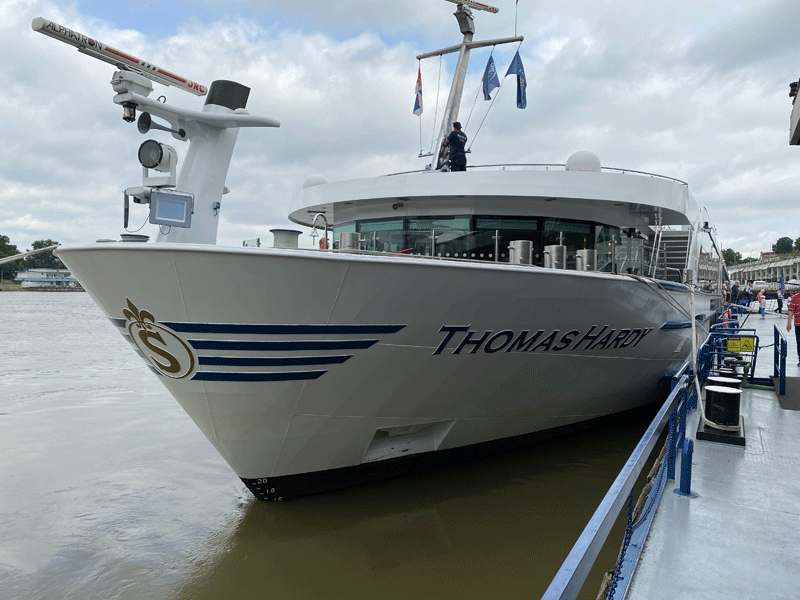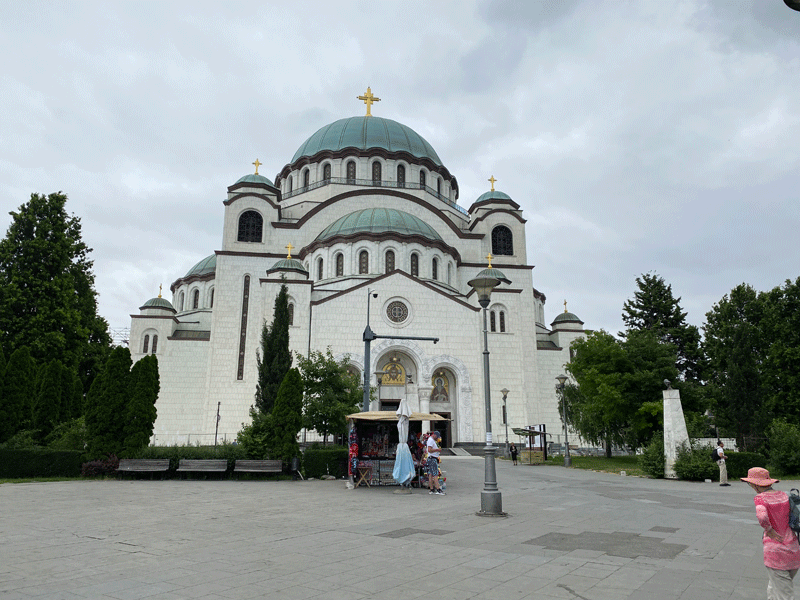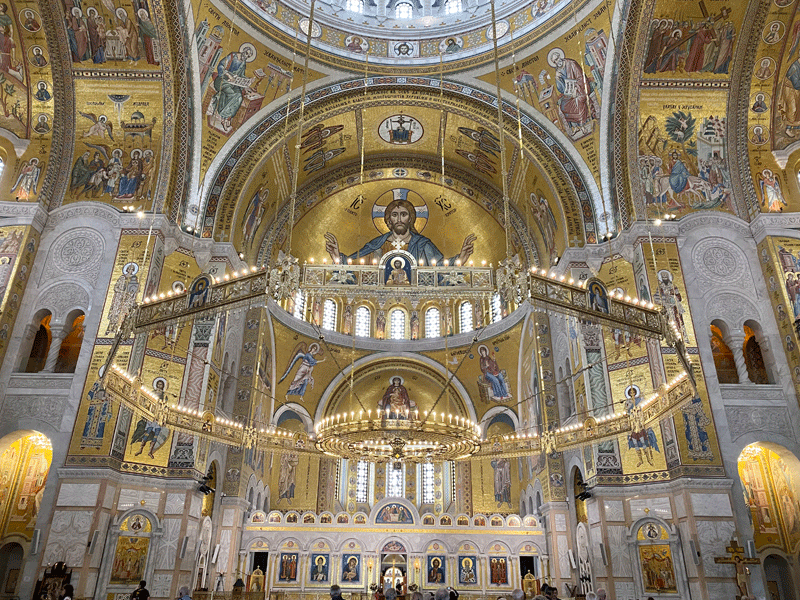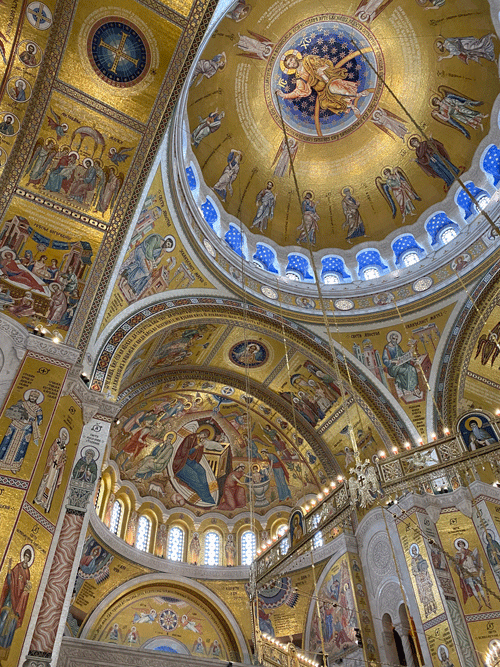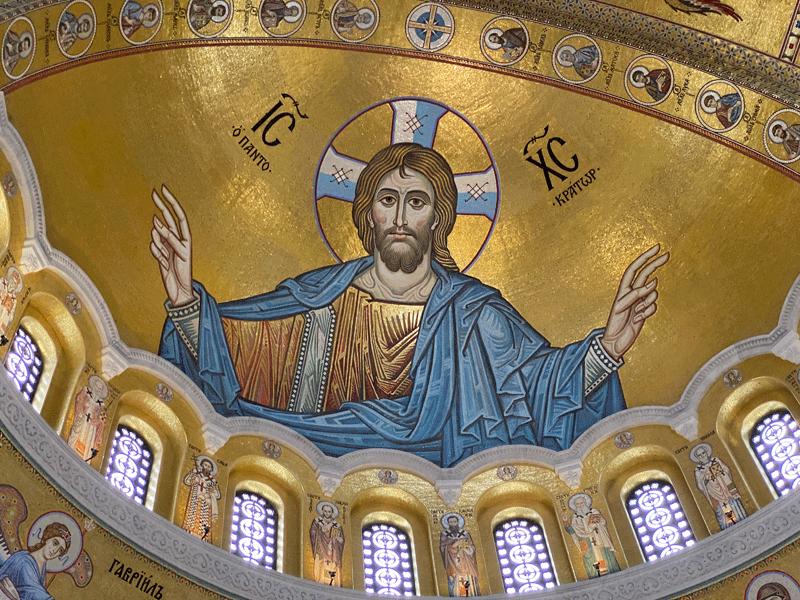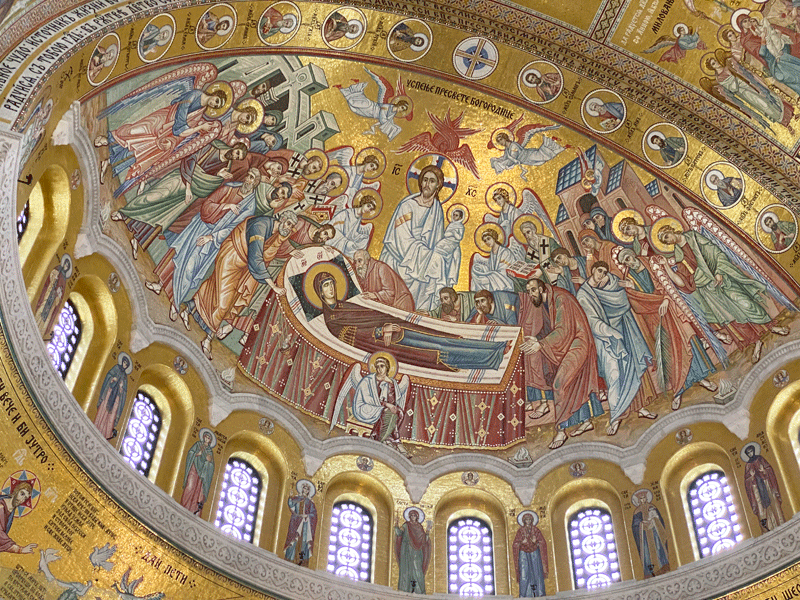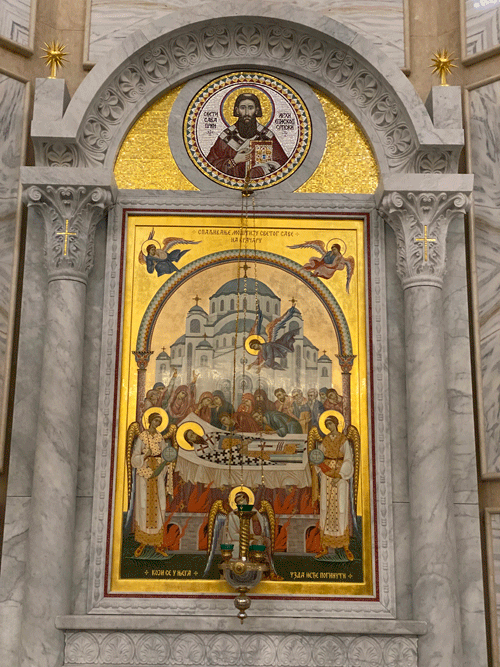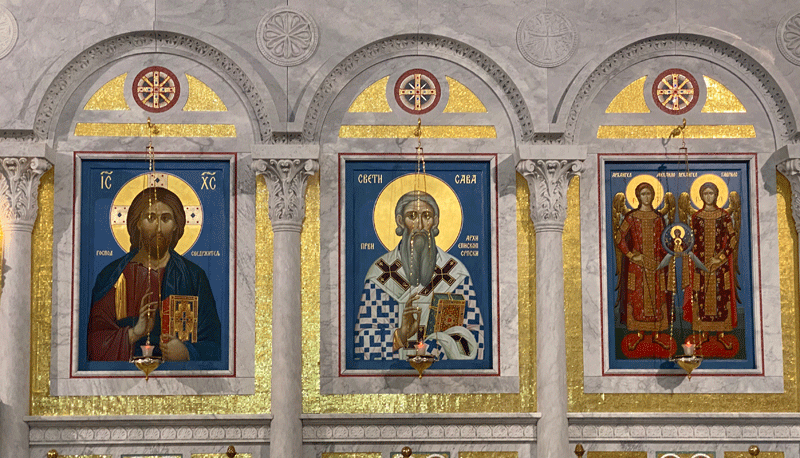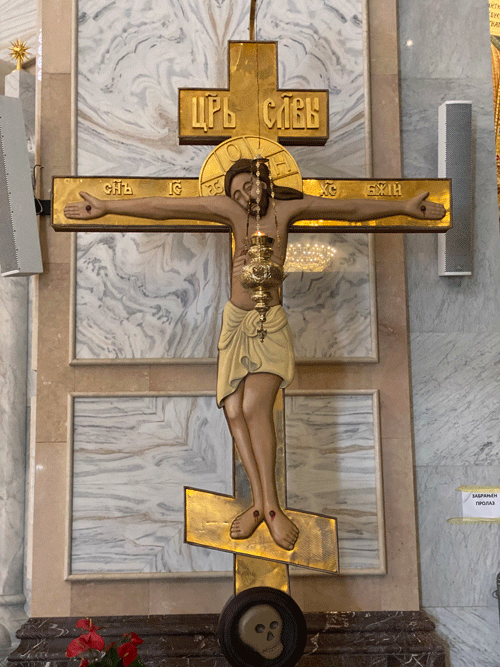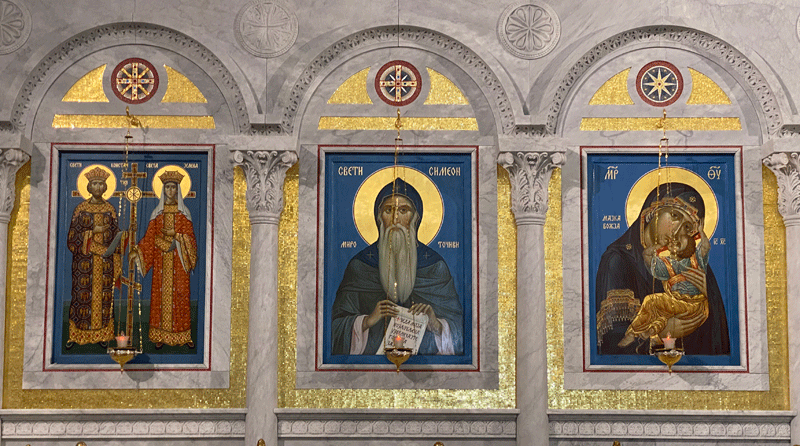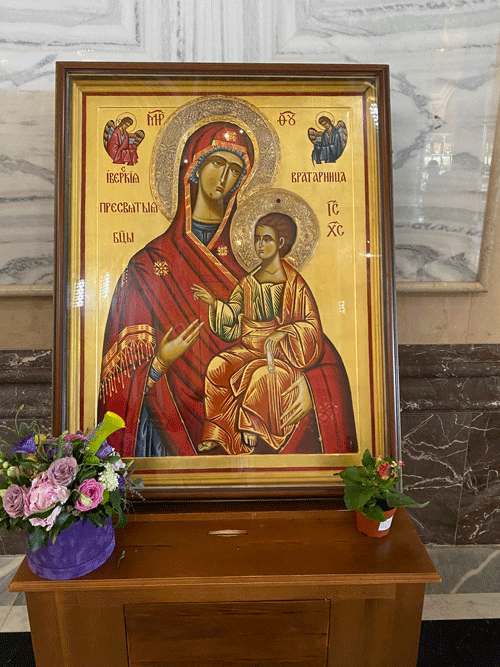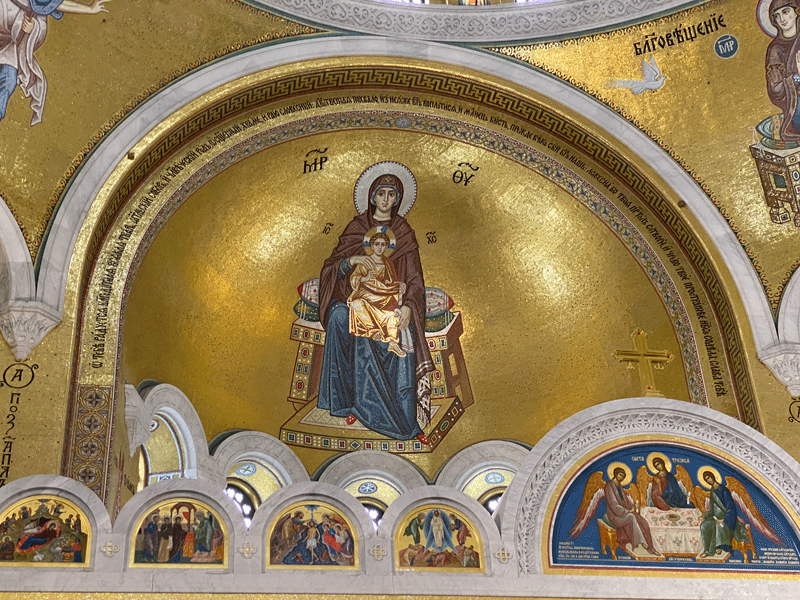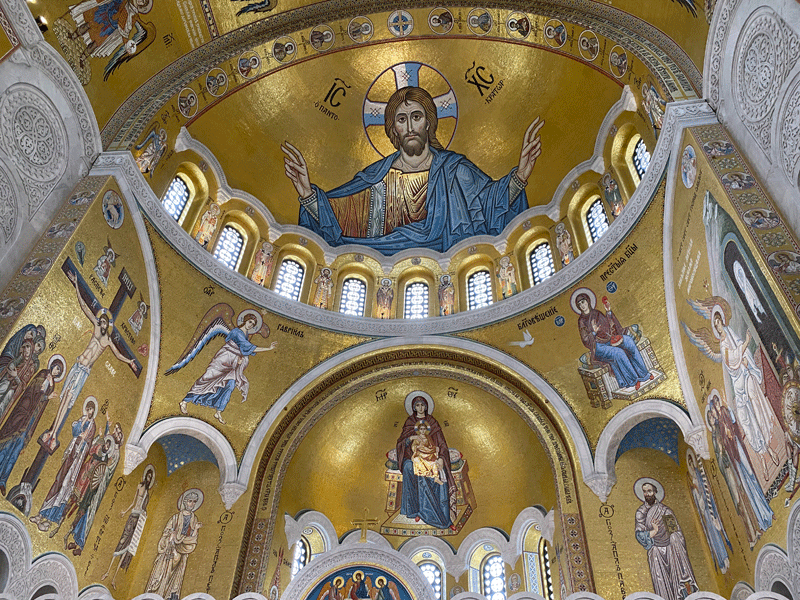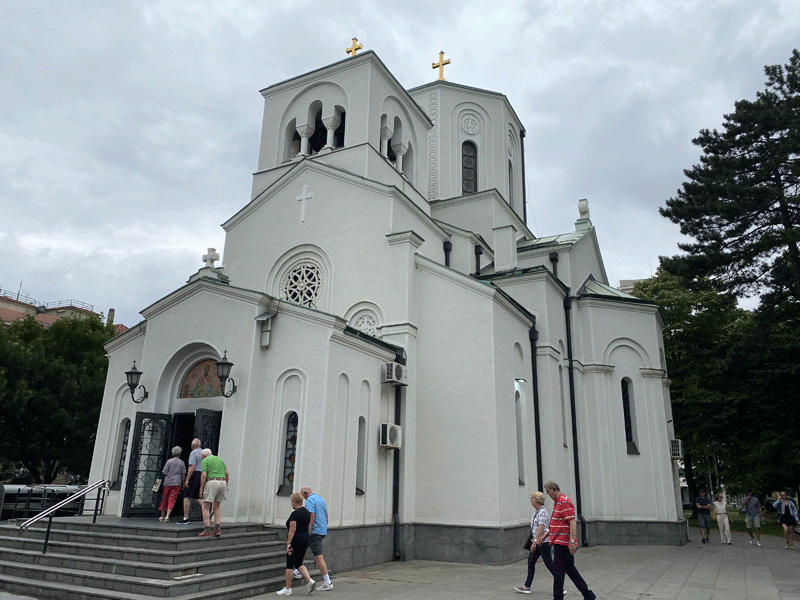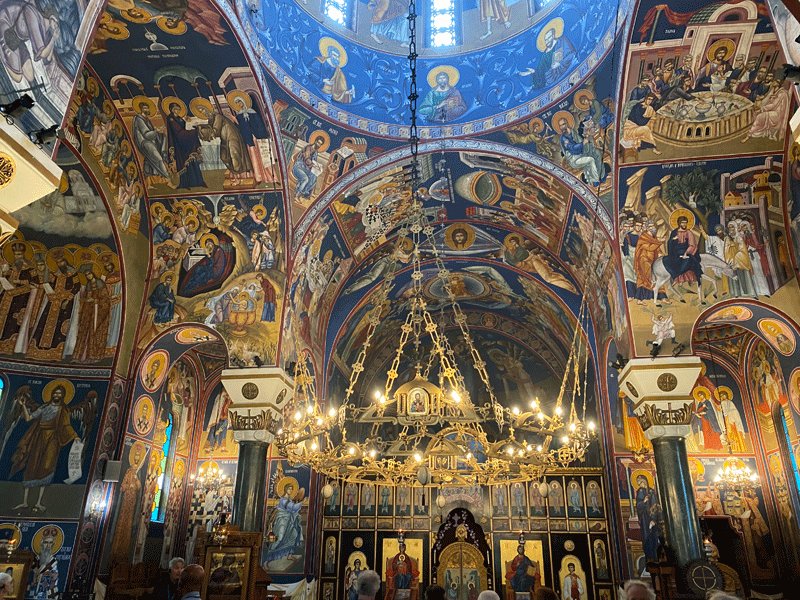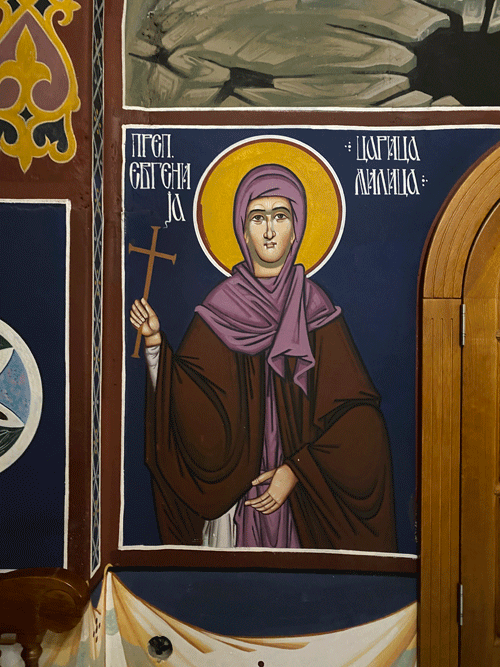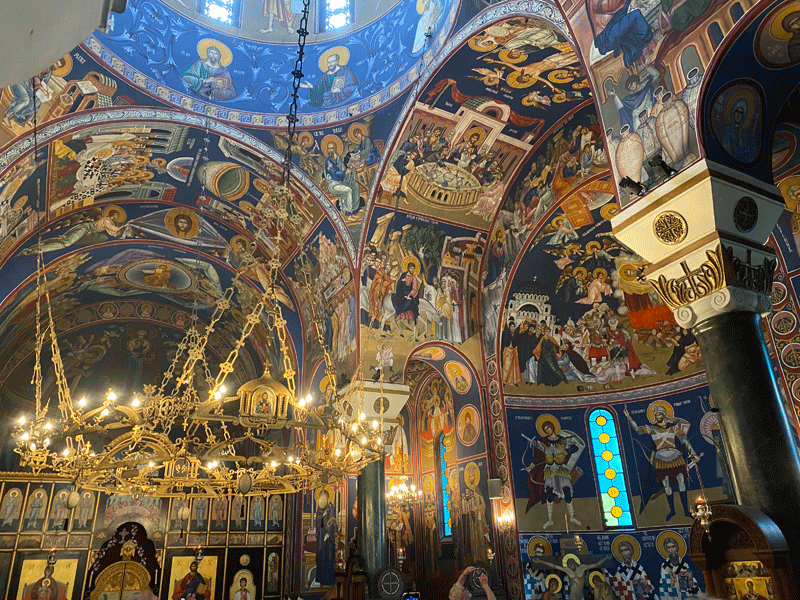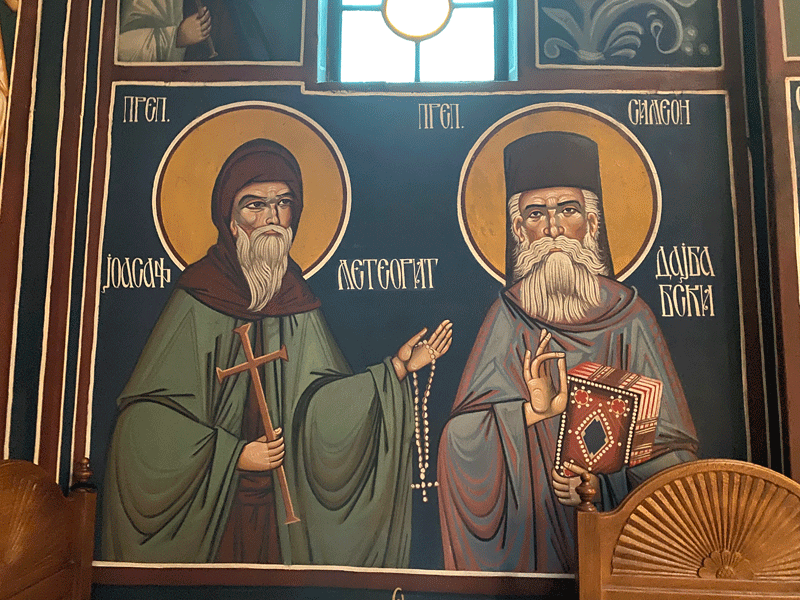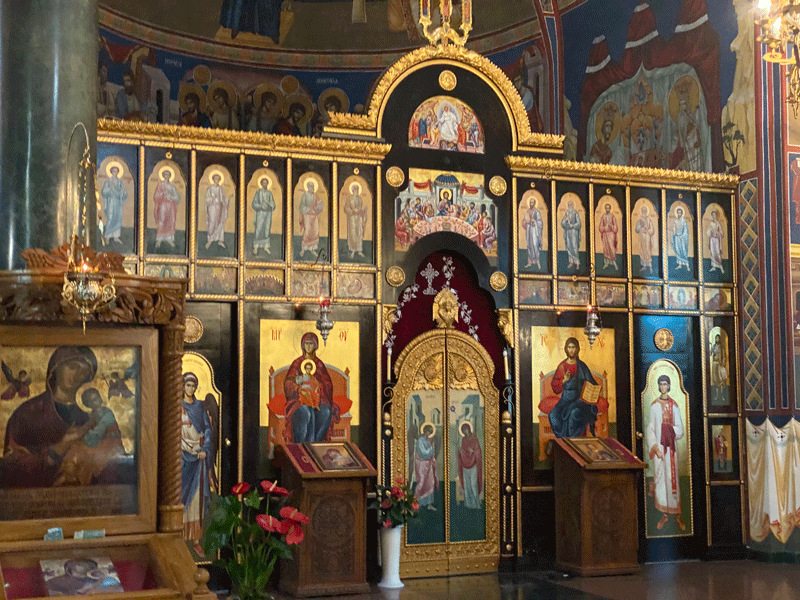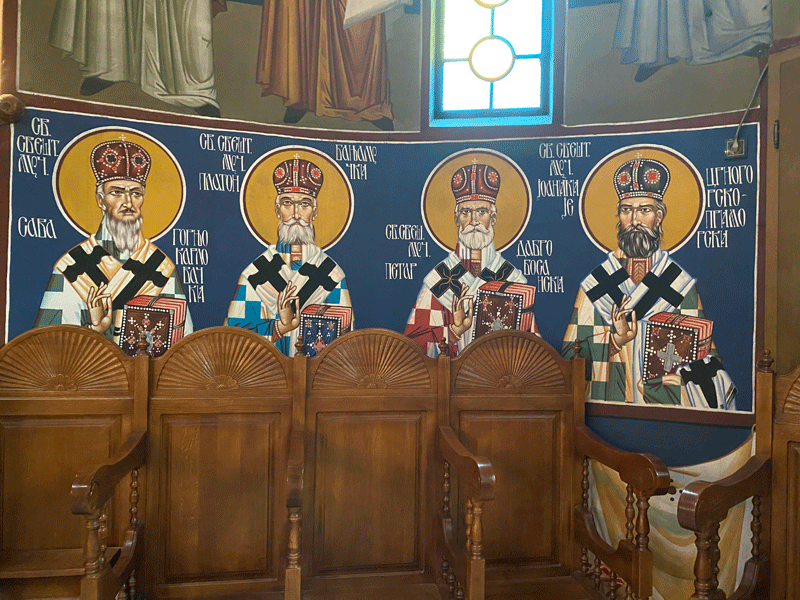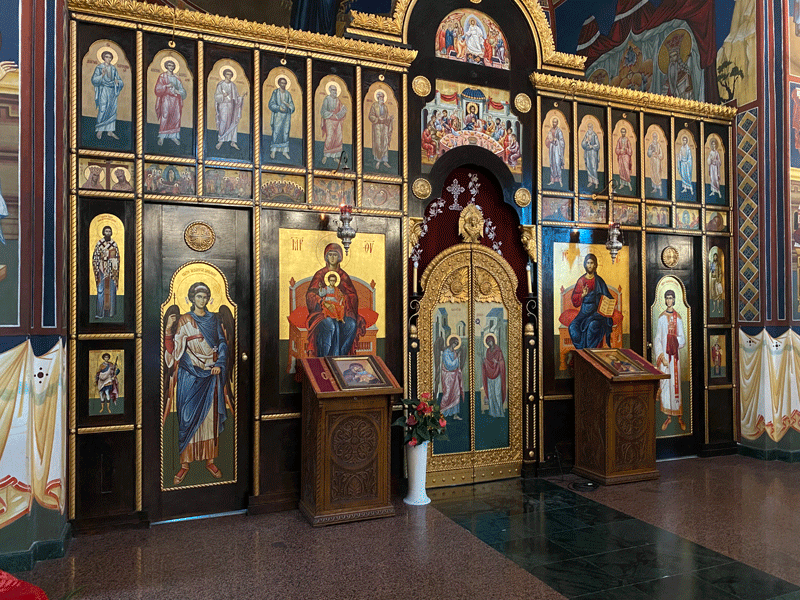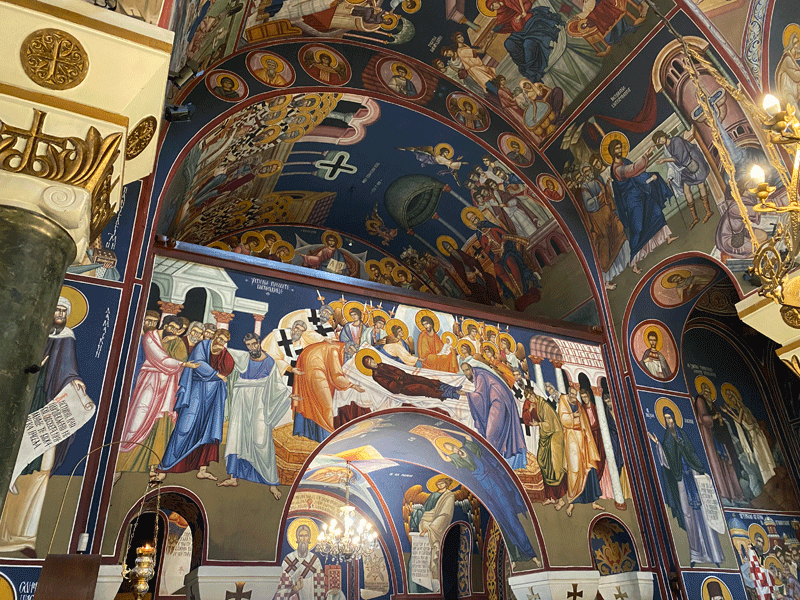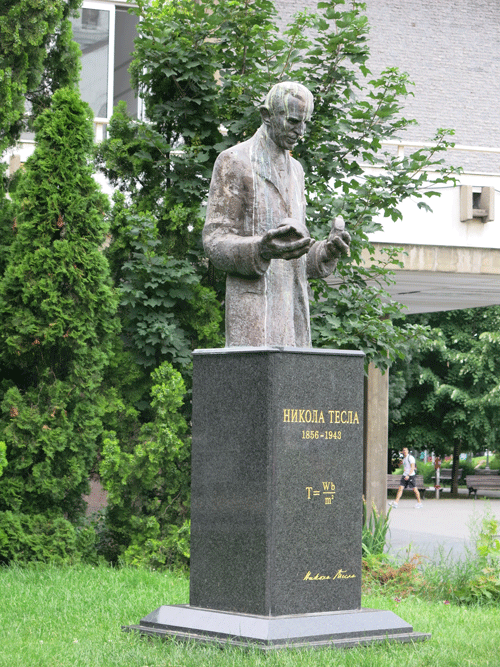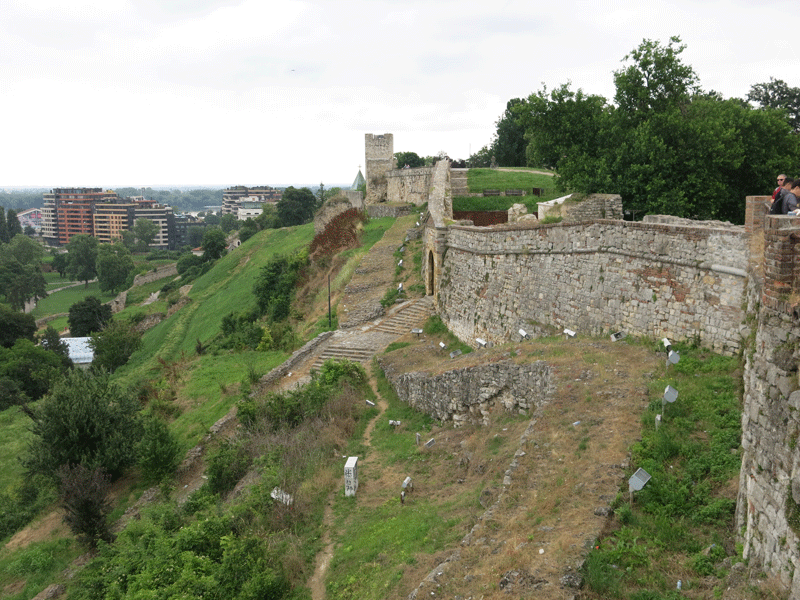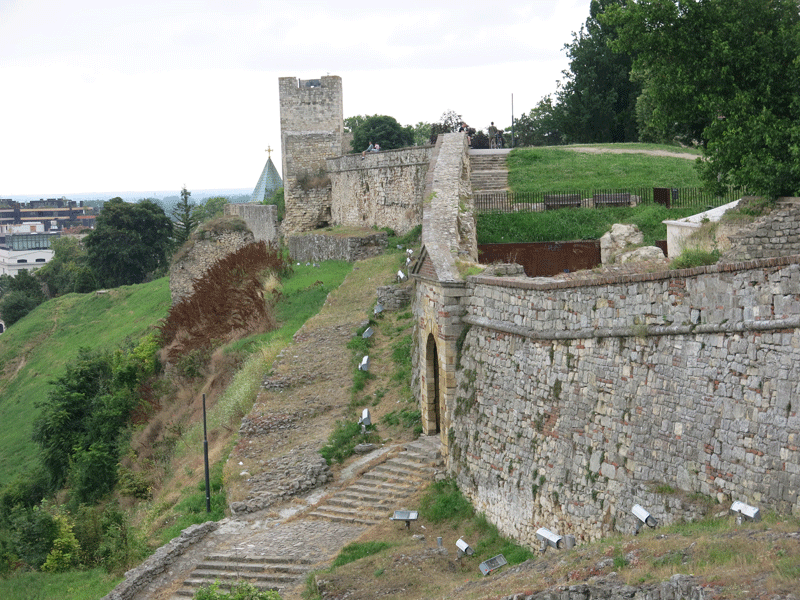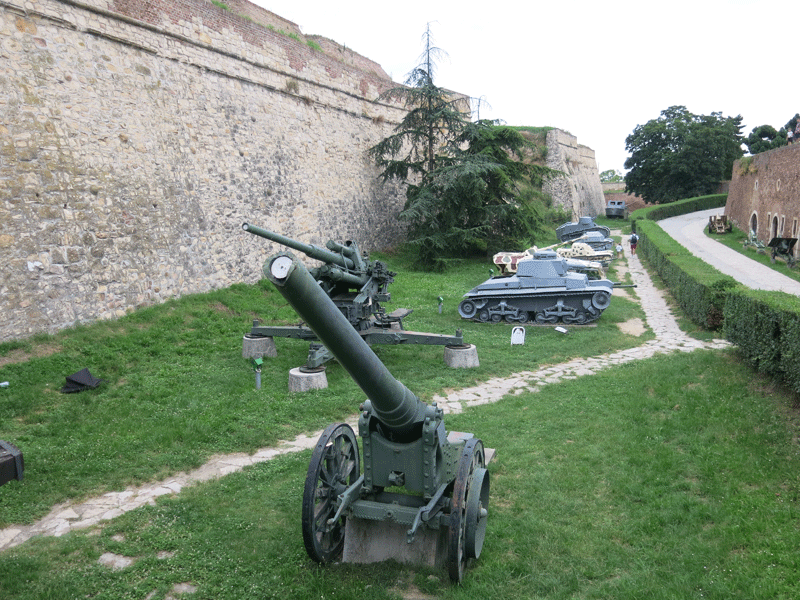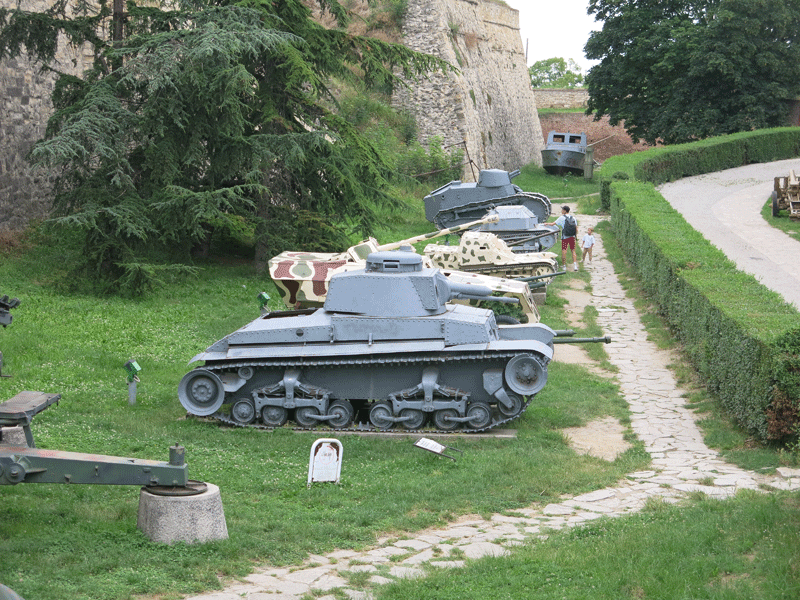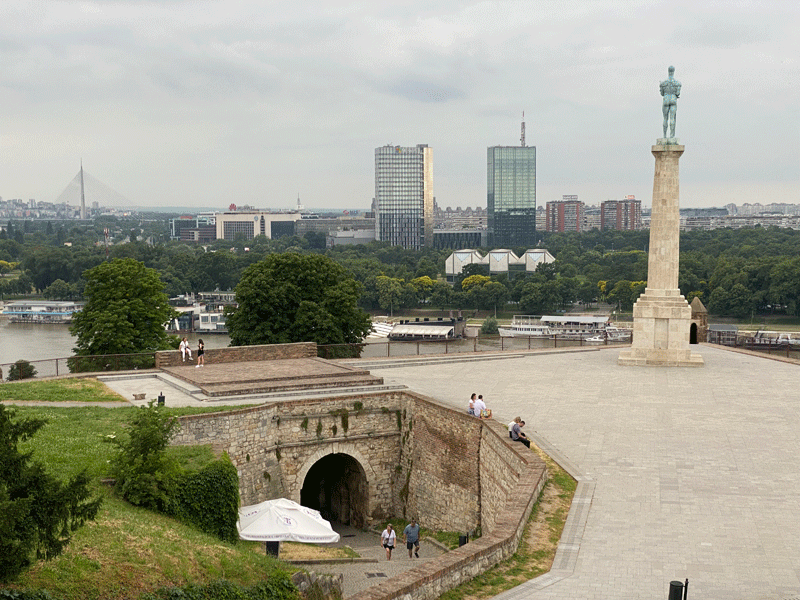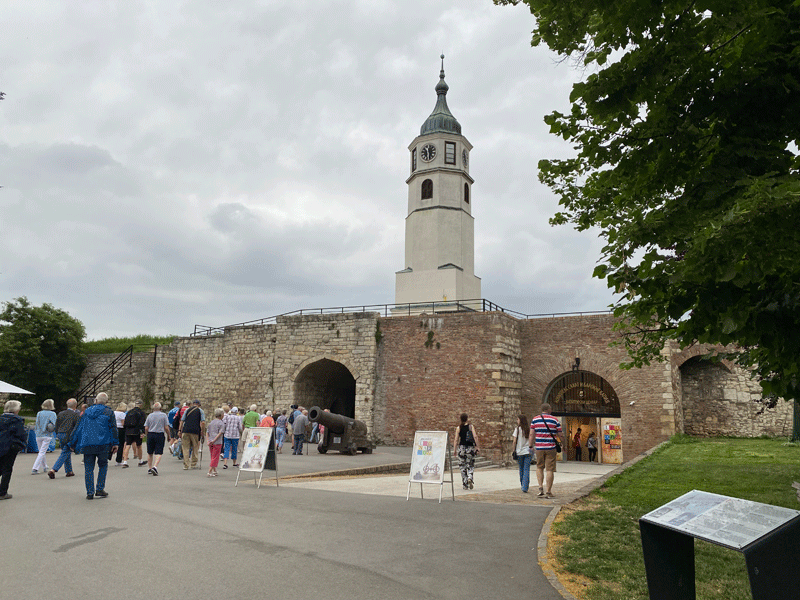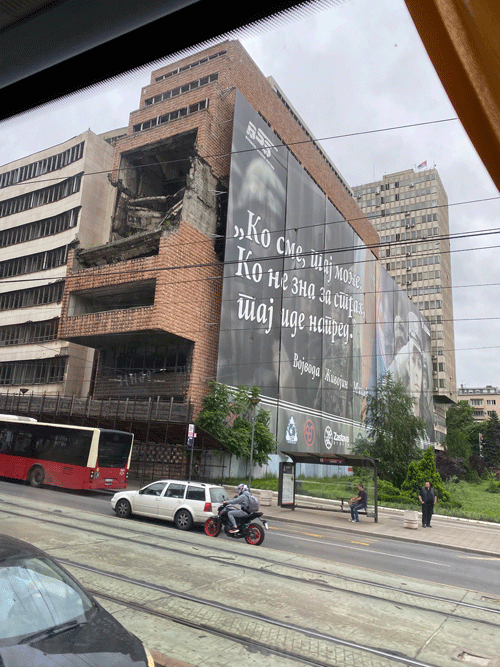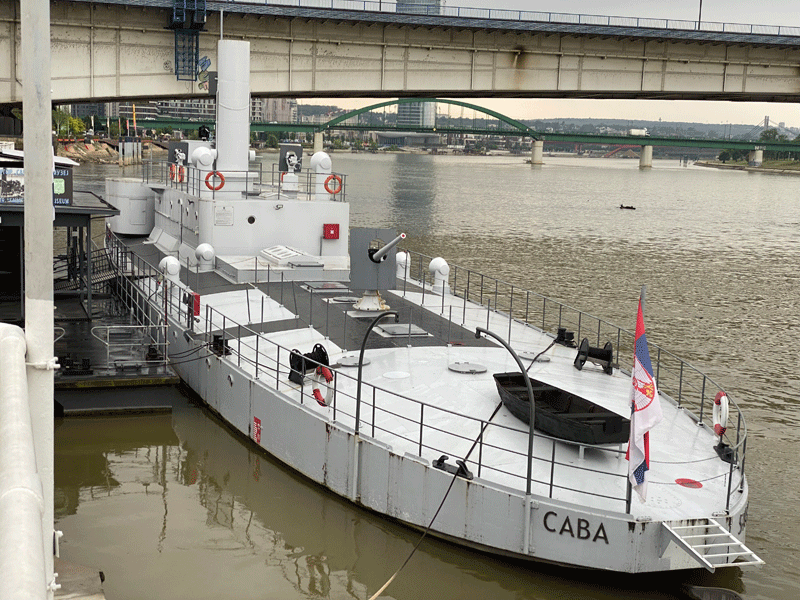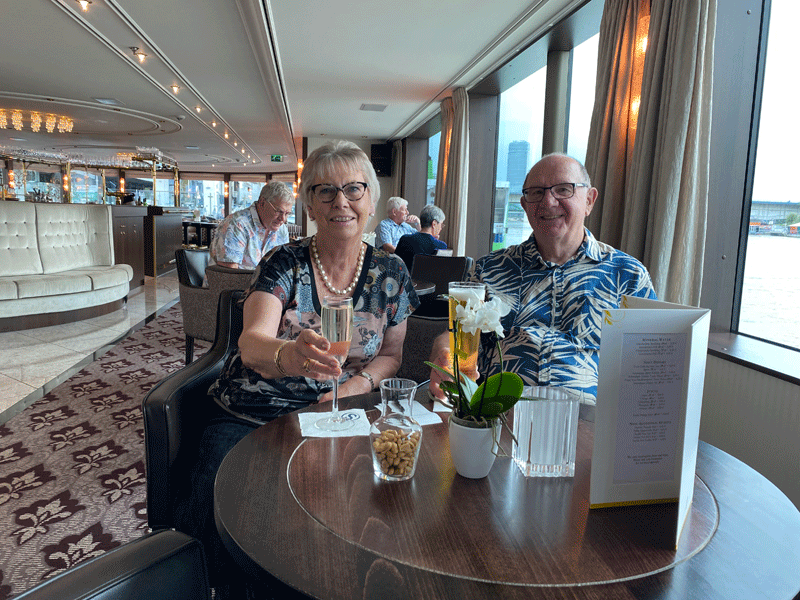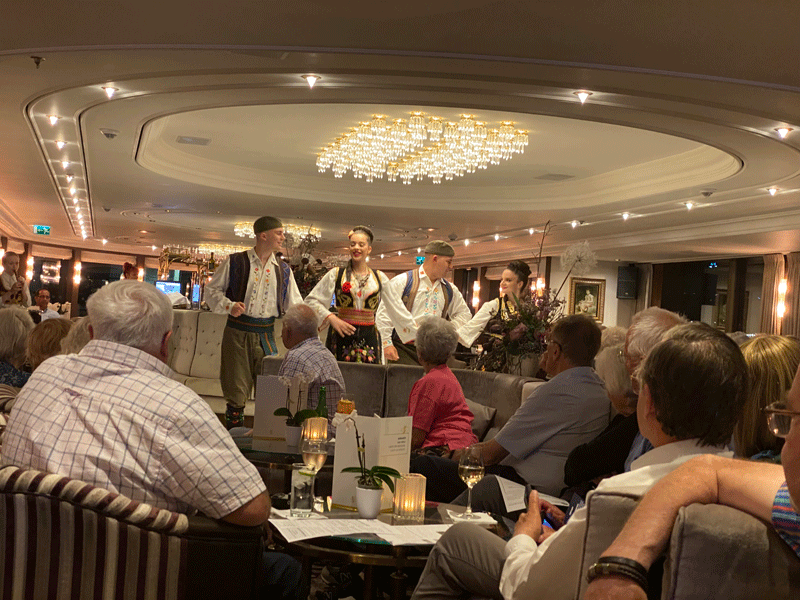The Temple of Saint Sava in Belgrade – Hram Svetog Save – the Saint Sava Orthodox Cathedral is one of the chief landmarks of Belgrade and probably of Serbia, and is the second largest Orthodox church in the world. The Saint Sava Orthodox Cathedral is dedicated to Saint Sava, the founder of the Serbian Orthodox Church in the Medieval Serbia and its first Archbishop, and the originator of Serbian legislation and literature, and the founder of the Hilandar Monastery on Mount Athos and a diplomat. The Cathedral is built on the Vra?ar plateau /named later Svetosavski plateau after the Saint Sava/ on the spot where the largest Orthodox Church in Belgrade stood until its destruction by invading Turks and where the holy remains of this prominent Serbian saint were moved from the Mileševa Monastery to have been burned in 1595 by the Sinan Pasha of the Ottoman Empire.
The Saint Sava Orthodox Cathedral in Belgrade, also known as the Temple of Saint Sava is one of the largest buildings in Belgrade, being in fact the second largest Orthodox Christian complex in the entire world, bearing nearly twice the size of the Saint Basil’s Cathedral in Moscow. The Saint Sava Cathedral finishes Belgrade’s line Kalemegdan – Trg Republike – Terazije – Beogra?anka – Slavija – Temple of Saint Sava. From its particular position on the vast plateau of Vracar in Belgrade, the Saint Sava Orthodox Cathedral dominates the Belgrade’s cityscape.
The idea of construction of the Temple of Saint Save came from Matija Ban, one of the most famous representatives of the Serbs of Catholic religion from Dubrovnik. The Society for construction of the Saint Sava Cathedral in Vracar area was founded in 1895. Construction of the Saint Sava Orthodox Cathedral began in 1935, based on designs by the famous Serbian architects Bogdan Nestorovi? and Aleksandar Deroko. Construction was halted due to the outbreak of World War II and the severe bombing of Belgrade, followed by the time of Tito’s communist Yugoslavia and thus the temple had to wait for better times, until 1984 when the then-communist Yugoslav government permitted construction to continue. Construction of the Saint Sava Cathedral in Belgrade was only resumed in May 1985, when the Divine Liturgy was served with presence of almost 100000 believers, and was ever-since being financed exclusively by donations.
Made of highly polished local stone of the interior, but the facade of wonderful white marble and granite on the exterior with elegant domes, topped with golden crosses, the Saint Sava Orthodox Cathedral dominates the region of Belgrade where it stands, surrounded by an extensive array of walkways, reflecting pools, and gardens. The Saint Sava Orthodox church in Belgrade itself is 91 meters long from east to west, and 81 meters wide from north to south. The dome of the Saint Sava Orthodox Cathedral in Belgrade is 70 meters high, while the main gold plated cross is another 12 meters in height, which gives a total of 82 meters of the height of the Saint Sava Orthodox Cathedral. Its domes have 18 more gold-plated crosses of various sizes, while the bell towers feature 49 bells. The highest point is 134 meters above the sea level (64 meters above the Sava river); therefore this impressive Orthodox church holds a superior dominant position in Belgrade’s city scape and is visible from all approaches to the city. The monumental dome of the Saint Sava Church in Belgrade, 4000 tons in weight was in fact constructed as a single piece on the ground and then lifted up onto existing walls, a process that took 40 days and the most advanced cranes available at the time.
The facade of Saint Sava Cathedral Belgrade is completed of white marble and granite and, when finished, the inner decorations will be of wonderful mosaics. The central dome of the Saint Sava Orthodox Cathedral in Belgrade contains the mosaic of Christ Pantocrator which is part of total of 15000 sq meters mosaic within this monumental Orthodox church. To give a sense of the monumental scale, the eyes of Christ Pantocrator are about 3 meters wide. The 10-ton cargo with the first part of the mosaic for the largest dome of the Temple of Saint Sava traveled for over 2,000 km through Russia, Belarus, Poland, Slovakia, and Hungary before reaching Serbia. The mosaic, depicting the Ascension of Jesus Christ, is the work of Russia’s leading iconographer, Nikolai Mukhin. The mosaic, that features a 30-meter diameter and spreads on an area of 1,230 square meters, weighing a total of 40 tons, has been installed by a Russian-Serbian team.
The Saint Sava Orthodox Cathedral in Belgrade covers a surface area of 3,500 square meters on the ground floor, with three galleries of 1,500 sq meters on the first level, and a 120 sq meters gallery on the second level. There are three altars within the Saint Sava Church of which the main is dedicated to Saint Sava, while right from the entrance is the altar dedicated to the first Christian martyrs of Belgrade – Ermilus and Stratonicus. The third altar of the Saint Sava Cathedral is dedicated to despot Stefan Lazarevic who made Belgrade the royal capital in the Middle Ages. The Saint Sava Orthodox Cathedral in Belgrade can receive at any time 10,000 faithful people. The three choir galleries of Saint Sava Orthodox Cathedral n Belgrade can accommodate 800 singers each, with the observation gallery. The basement contains a crypt, the Treasury of Saint Sava, and the grave church of Saint Lazar the Hieromartyr, with a total surface of 1.800 sq meters. In 2020 the stunning mosaic in Saint Sava Temple was finished. Covering 15000 sq meters, with at least 50 million pieces, this mosaic weights more than 320 tons. Over a four year period 300 artist and crafts people were involved in the creation of the Saint Sava Cathedral mosaic. The Saint Sava Temple in Belgrade is partly open for visitors, while works on the interior space are still ongoing.

